
http://www.iaeme.com/IJM/index.asp 1 editor@iaeme.com
International Journal of Management (IJM)
Volume 10, Issue 3, May-June 2019, pp.1–7, Article ID: IJM_10_03_001
Available online at http://www.iaeme.com/ijm/issues.asp?JType=IJM&VType=10&IType=3
Journal Impact Factor (2019): 9.6780 (Calculated by GISI) www.jifactor.com
ISSN Print: 0976-6502 and ISSN Online: 0976-6510
© IAEME Publication
USING HERZBERG THEORY TO DEVELOP
THE EMPLOYEES’ PERFORMANCE OF
RAFHAN MAIZE INDUSTRY
Sumra Haleem Shaikh*
PhD Research Scholar, University of Sindh, Jamshoro, Pakistan
Haseeb Shaikh
Engineer, Civil Department, Mehran University of Engineering and Technology,
Jamshoro and Sr. Estimator Engineer at Riyadh Metro Project - Riyadh Saudia Arabia
Sumair Shaikh
Engineer, Mechanical Department, Quaid e Awam University of Engineering, Science
and technology, Nawabshah, Pakistan
*Corresponding Author
ABSTRACT
This study determine the impact of Herzberg two-factor theory on employees of
Rafhan industry. The current paper applies Herzberg two-factor theory for improving
the employees’ performance. Seven point Likert scale is used for survey purpose.
Descriptive statistics, Reliability test, Pearson correlation, Analysis Of Variance
(ANOVA), t test and multiple regression techniques are used for data analysis.
Convenience non-probability sampling and random probability sampling are applied
in this study. The results have shown that motivators (advancement, achievement, work
itself, recognition and growth) and hygiene factors (company policy, work security,
relationship with supervision, working condition, money and relationship with peers)
of Herzberg two-factor theory are positively effects on employees’ performance. This
study provide much knowledge about Herzberg theory that create benefits to individual
as well as for organization. This study suggested that motivators (advancement,
achievement, work itself, recognition and growth) and hygiene factors (company policy,
work security, relationship with supervision, working condition, money and relationship
with peers) should be employed in Rafhan industry properly.
Key word: Employee performance, Herzberg’s theory, Hygiene factors, Motivators,
Rafhan Industry.
Cite this Article: Sumra Haleem Shaikh, Haseeb Shaikh, Sumair Shaikh, Using
Herzberg Theory to Develop the Employees’ Performance of Rafhan Maize Industry,
International Journal of Management, 10 (3), 2019, pp. 1–7.
http://www.iaeme.com/IJM/issues.asp?JType=IJM&VType=10&IType=3

Sumra Haleem Shaikh, Haseeb Shaikh, Sumair Shaikh
http://www.iaeme.com/IJM/index.asp 2 editor@iaeme.com
1. INTRODUCTION
Factors of Herzberg theory are essential for improvement of performance for every organization
(Nosraty et al., 2015). Rafhan Maize industry, is working as a team to make their customers
relations good by providing best ‘Halal’ and safe food and services. Rafhan Maize industry
keeps employees at their position for long period. Rafhan Maize industry also provide harmless
and protected environment to their employees. Rafhan Maize industry controls Food Safety
Threats and operate their operations in excellence ways to provide their customers qualitative
product.
Employees are effective factor responsible for their performance and progress of
organization therefore, employees should be motivated (Nosraty et al., 2015). Motivation
motivates the employees for doing best work for achieving goals of organization (Nosraty et
al., 2015). This study focused on Herzberg two-factor theory that categorized into two groups:
Motivators and hygiene factors (Dartey-Baah, K., 2011).
2. LITERATURE REVIEW
Stoke (1999) defined motivation is a good way to motivate employees. When someone is not
motivated, it means he/she does not feel good and relax at workplace. Secondly, for better
performance, motivation factors plays an important role. Managers should apply motivation
and hygiene factors in their organization for better productivity and sustainability of
organization. According to Seligman (1995), the motivation function is maximizing satisfaction
by minimizing pain physically. Miner et al., (1995) asserted that needs, drives and incentives
are interacting elements of motivation.
Motivation is doing something as drinking water for reducing thirst or reading book to gain
knowledge. Motivation is a way to arouse the performance by organic, emotive, societal and
intellectual powers. Many companies make handsome policies for developing skills of
employees. These policies are very helpful for boosting the performance of organization and
for achieving sufficient output (Bhadoriya & Chauhan, 2013).
Employees can be identified through organization goals and their contributions. Moorhead
and Griffin (1998) asserted that management functions are properly implement with motivated
employees. Emeka et al., (2015) asserted that high motivation of employees influenced by
variety of factors as job security, employees’ satisfaction, training and development,
compensation, appraisals, positive feedback, intrinsic (intangible) rewards and extrinsic
(tangible) rewards. Through motivation, employees do their best work even in strenuous
circumstance and face the greasy challenges easily.
Dahlqvist and Matsson (2013) asserted that for higher performance of employees,
motivation is an important aspect, which also retains them for longer period in organization and
ultimately increases company’s reputation. Employees are more satisfied through opportunities,
good working condition, good policies, security of a job and loyal relations (Palaniammal,
2013).
Shahid (2012) summarized that employees’ motivation is highly motivated by financial
incentive, relationship with co-workers, promotional opportunities and employees’
employment.
Bruzelius and Skarvad (2004) believed that intrinsic and extrinsic rewards make the
employees’ motivation high and they become professional which boosts company’s worth.
Employee’s motivation helps in growth of organization as well as growth of individual. The
rewards positively influence worker’s performance and motivate them to boost their
productivity by keeping in mind task fulfillment and goal achievement. Whiteley (2002) noted
that higher motivation increases the employees’ performance that gives the best outcomes.

Using Herzberg Theory to Develop the Employees’ Performance of Rafhan Maize Industry
http://www.iaeme.com/IJM/index.asp 3 editor@iaeme.com
There are two aspects of Herzberg theory, motivators and hygiene factors (Stello, 2012).
Current study supports to fill the gap in organizational behavior research. Earlier studies have
found significant and positive results, in terms of employees’ performance such as Bear et al.,
(2017), Parker et al., (2017) and Stella (2013). The research of Hur (2017) considered the
influence of public sector managers’ relation with their employees by applying Herzberg’s
theory and results determined the positive response among them. Matei and Abrudan (2016)
also applied applications of Herzberg’s two-factor theory to deliberate the relationship between
motivations of employees with culture of organization. The results of Matei and Abrudan
(2016) signified positive results that motivators are driven from intrinsic motivation, which
gives positive response to employee performance whereas hygiene factors are driven from
extrinsic elements, which eliminate the areas of dissatisfaction.
According to Herzberg (1974), moral spirits related to motivators such as advancement,
achievement, work itself, recognition and growth. Whereas immoral or unpleasant feeling
related to hygiene factors such as company policy, work security, supervision, money, working
condition and relationship with peers (Dartey-Baah, and Amoako, 2011).
Good or superior feelings related to motivators (recognition, achievement, advancement,
work itself and growth) whereas bad or awful feeling related to hygiene factors (job security,
salary, work conditions, good relationship with coworkers, company policy and effective
supervision) (Herzberg, 1959). In 1968, an article was published by Herzberg, which explained
the way to enforce employees to do their job task. For this purpose KITA, terminology was
used which meant to push the employees to do job completely which makes the job interesting
but not motivating (Dartey-Baah and Amoako, 2011).
Two-factor theory argued that individuals are not motivated by lower-level needs (extrinsic
or hygiene factors) only because hygiene factors do not motivate them but eliminate
dissatisfaction for better performance. Top stage of requirements (intrinsic or motivation
factors) should be given for motivating and improving employee’s performance (Robbins,
2009; Ramlall, 2004).
According to Dahie et al., (2015), industrial employees can improve their individual and
organizational performance by applying two-factor theory. Motivators and hygiene factors
create the positive and significant relation with employee motivation (Edrak et al., 2013).
Herzberg two-factor theory not only distinct the disputes of satisfaction and dissatisfaction but
also explained the mode of two groups of intrinsic and extrinsic factors affect employees (Tan,
2013). Motivators and hygiene factors of Herzberg theory demonstrate the way to increase the
productivity and improve skills of employees in efficient, operative and ordered way (Stello,
2012). Latham (2012) determined that the Herzberg two-factor theory mostly focused at
specific necessities for their pleasure. Motivators cause increase in level of motivation whereas
decrease in level of motivation cause the absence of hygiene factors (Ghafoor, 2012).
3. SCOPE OF THE STUDY
Current paper will provide vast information in educational work. Corporate managers and
Government Policy Makers will use the results of this research. This paper will play a
supportive role for researchers and professionals to recognize the dynamic and constructive
relationship between motivators and hygiene factors with employees’ performance.
4. RESEARCH OBJECTIVES
The research consists of following objectives:
To evaluate the effects of motivation factors on employees’ performance.
To evaluate the effects of hygiene factors on employees’ performance.

Sumra Haleem Shaikh, Haseeb Shaikh, Sumair Shaikh
http://www.iaeme.com/IJM/index.asp 4 editor@iaeme.com
5. RESEARCH HYPOTHESES
In this study, research hypotheses are:
H1: Motivators significantly correlated with employees’ performance.
H2: Hygiene factors significantly correlated with employees’ performance.
6. RESEARCH METHODOLOGY
For purpose of gathering and analyzing of data, research methodology plays an important role.
The sample size is 455 to illustrate the target population. According to using online Raosoft
sample size calculator, the sample size estimated is 384 (Raosoft, 2004). The data for this study
is collected through questionnaires. Reliability test is conducted through SPSS version 20.0.
ANOVA test, multiple regression techniques and independent t test are used for analysis of
data. Convenience non-probability sampling and random probability sampling are applied from
which we can efficiently collect data. The data was collected from the Rafhan Maize Product
Co. Ltd located at industrial areas of Kotri, Hyderabad, Sindh.
7. ANALYSIS
The results regarding descriptive statistics, internal consistency of variables and multiple
regression used for current paper are following:
According to table 1, the descriptive statistics of motivators such as advancement,
achievement, work itself, recognition and growth have mean more than 5 represented that these
factors are close to degree that is agree level of statements. The individual Cronbach apha of
intrinsic factors are statistically acceptable results whereas combined intrinsic factors showed
statistically excellent results. The coefficient of determination (R square) of motivators is 0.588
and hygiene factors is .575. This model have explained the variance which described that five
(motivators) independent variables have explained 58.8% of variation in (employees’
performance) dependent variable. The results showed model is better fit which leads to less
estimation error. The F-statistic of motivators (1237.69) at 0.000 p value. According to rule of
thumb for significant p value is <0.05, results show model is best fit.
Table 1 of motivators of Rafhan industry
Rafhan Maize Industry
Intrinsic Factors
Mean
SD
Cronbach alpha
Advancement
5.518
.68749
. 745
Achievement
5.6201
.69921
. 723
Work itself
5.5113
.71971
. 739
Recognition
5.4948
.82296
. 778
Growth
5.4784
.78645
. 798
Combined intrinsic factors
.970
R square
Adjusted R square
F value
P value
.588
.587
1237.69
.000
According to table 2, the descriptive statistics of hygiene factors such as company policy,
work security, relationship with supervision, working condition, money and relationship with
peers have mean more than 5 represented that these factors are close to degree that is agree
level of statements. The individual Cronbach apha of extrinsic factors are statistically
acceptable results whereas combined extrinsic factors showed statistically excellent results. The
coefficient of determination (R square) of hygiene factors is .575. This model have explained
the variance which described that six (hygiene) independent variables have explained 57.5% of
variation in (employees’ performance) dependent variable. The results showed model is better
fit which leads to less estimation error. The F-statistic of hygiene factors (978.760) at 0.000 p

Using Herzberg Theory to Develop the Employees’ Performance of Rafhan Maize Industry
http://www.iaeme.com/IJM/index.asp 5 editor@iaeme.com
value. According to rule of thumb for significant p value is <0.05, results show model is best
fit.
Table 2 of hygiene factors of Rafhan industry
Rafhan Maize Industry
Extrinsic Factors
Mean
SD
Cronbach alpha
Company policy
5.4455
.82336
. 843
Work security
5.4698
. 72941
. 796
Relationship with supervision
5.4899
. 80285
. 798
Money
5.4553
. 91971
. 884
Working condition
5.4547
. 94785
. 857
Relationship with peers
5.6741
.66391
.756
R square
Adjusted R
square
F value
P value
.575
.575
978.760
.000
Rafhan Maize industry operate economical operations to secure the food from hazards and
fulfil social responsibilities and making good customer relations.
8. CONCLUSION
Current paper illustrates the first impression in Rafhan Maize Industry, Kotri Sindh. No any
type of research is occur, in Rafhan Maize Industry Kotri. This paper recognizes the degree
level of certain motivational factors are influenced. The results from this study contribute that
motivating employees and sustaining the productivity, might significantly facilitate employees.
Moreover, present study also finds that motivational factors have strong positive impact on
performance of workers working in Kotri from Hyderabad, Sindh. The management of Rafhan
Maize Industry keeps the relationship healthy and for long period that create benefits for both
organization and individuals, which ultimately raise to industry reputation to national as well
as international level.
ACKNOWLEDGEMENT
I am very thankful to staff and teachers of IBA, University of Sindh, Jamshoro as well as staff
of Rafhan Maize Industry.
REFERENCES
[1] Alderfer, C. P, An Empirical Test of a New Theory of Human Needs. Organizational
Behavior & Human Performance, 4(2), 1969, pp 142 - 175
[2] Bear, G. G., Slaughter, J. C., Mantz, L. S., & Farley-Ripple, E., Rewards, praise, and
punitive consequences: Relations with intrinsic and extrinsic motivation. Teaching and
Teacher Education, 65, 2017, pp 10–20. https://doi.org/10.1016/j.date.2017.03.001
[3] Berl, R. L., & Williamson, N. C, A review of the content theories of motivation as they
apply to sales and sales management. American Business Review, 11, 1987, pp 53–64.
[4] Bhadoriya, S., & Chauhan, S. S, A Critical Analysis on Intrinsic & Extrinsic Factors of
Motivation. IJMBS InternatIonal Journal of ManageMent & BusIness studIes, 3(15), 2009,
pp 2230–9519.
[5] Ravi Chandra G and Dr. A.B.Saraswathi, Impact of Performance Management System on
Employee Performance- A Conceptual Frame Work for It Organizations, International
Journal of Civil Engineering and Technology, 9(6), 2018, pp. 412–420.


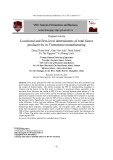
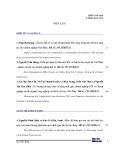
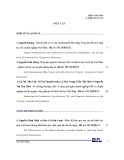

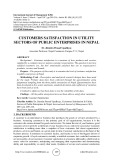
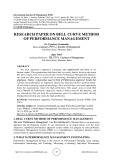

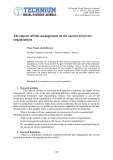
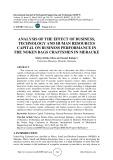
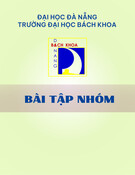
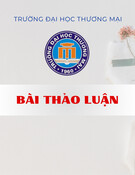





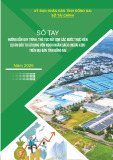
![20 câu hỏi Quản lý dự án phần mềm có đáp án [mới nhất]](https://cdn.tailieu.vn/images/document/thumbnail/2025/20251003/hieu2004haha@gmail.com/135x160/78791759734259.jpg)


![Tài liệu Quản lý dự án: Kiến thức nền tảng toàn diện [chuẩn SEO]](https://cdn.tailieu.vn/images/document/thumbnail/2025/20250910/kimphuong1001/135x160/92631757496585.jpg)



